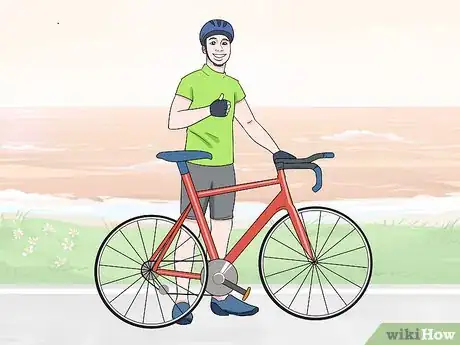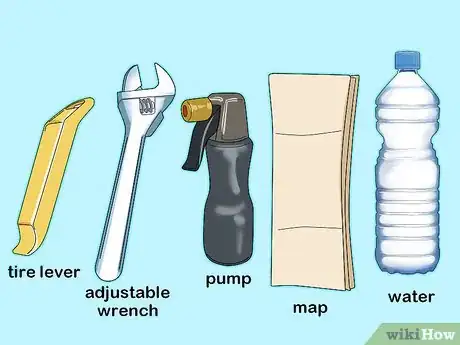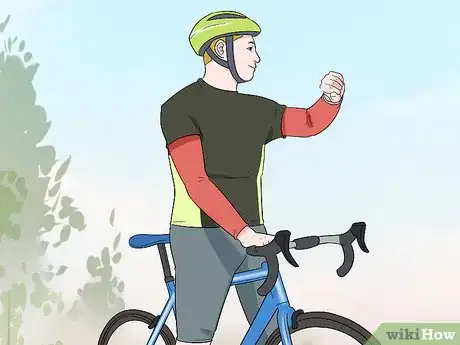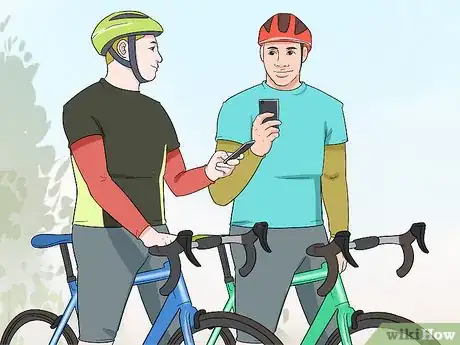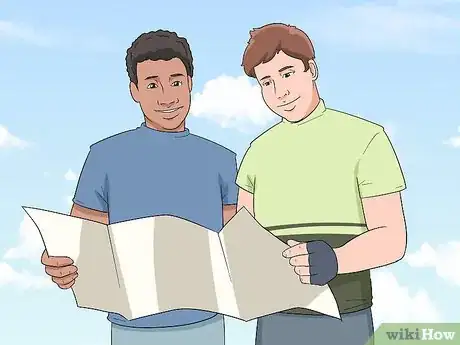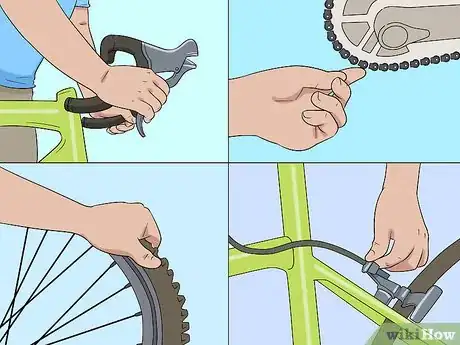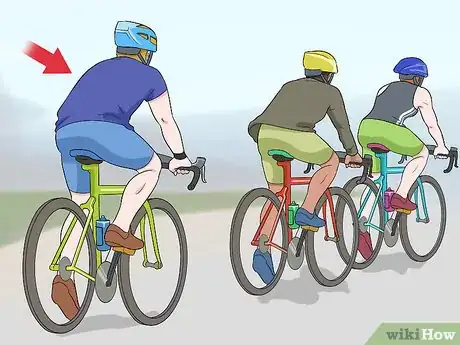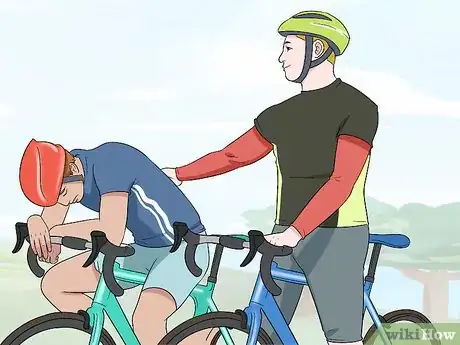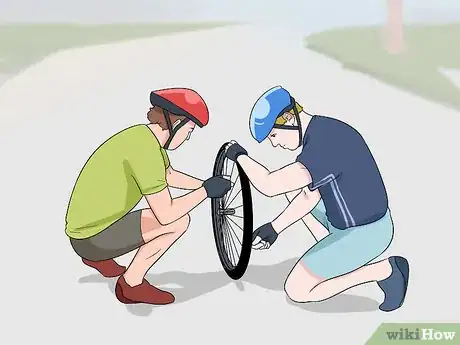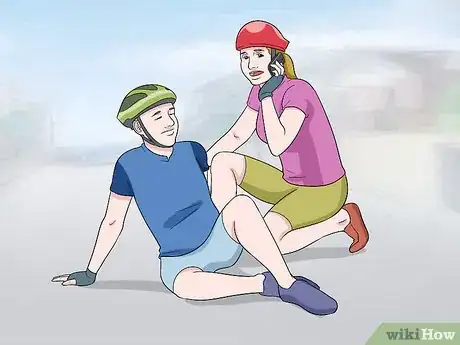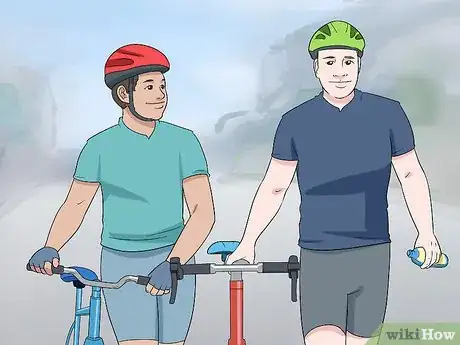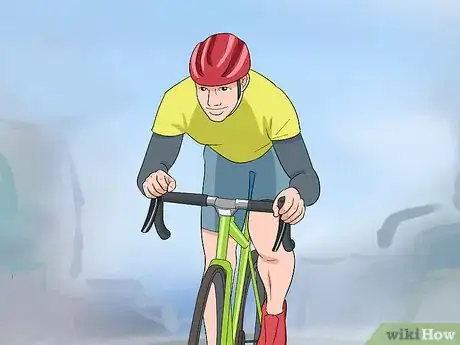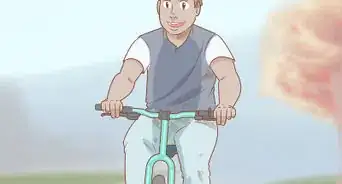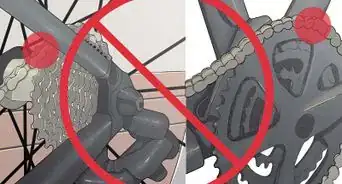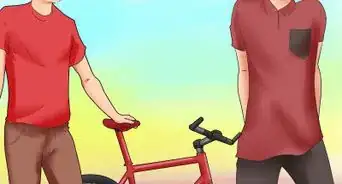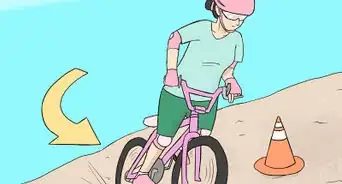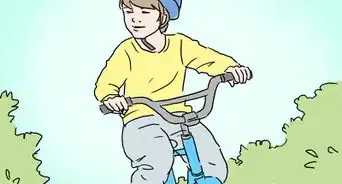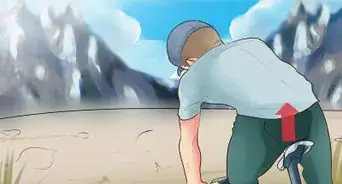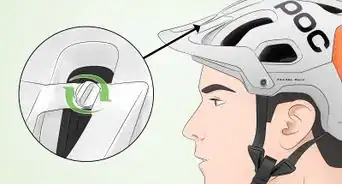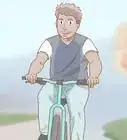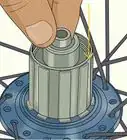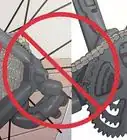X
wikiHow is a “wiki,” similar to Wikipedia, which means that many of our articles are co-written by multiple authors. To create this article, volunteer authors worked to edit and improve it over time.
This article has been viewed 20,044 times.
Learn more...
Riding sweep means staying at the back of a group bicycle ride, to make sure no one is left behind. With luck, you won't have much to do but keep the slower riders company. In case of difficulties, you will be there to help.
Steps
-
1Volunteer for sweep only if you are prepared to do the job. The most typical problems are tired riders who have difficulty keeping pace with the group, and flat tires. If you are an experienced, responsible bicycle rider and prepared to handle basic roadside repairs, consider riding sweep. If you're not comfortable with the added responsibility, wait, or ride as a "co-sweep" with another experienced rider.
-
2Ride prepared. Carry everything you will need if a group member gets stuck or has a problem.
- Carry a patch kit, tire levers, and a pump or CO2 cartridges.
- Carry basic tools. At a minimum, carry an adjustable wrench. A metric hex key set and multi-tool can be good choices, too.
- Carry a phone, and make sure it is fully charged.
- Carry enough food and water for yourself and a little extra to share.
- Carry a route sheet, cue sheet, and/or map, as necessary. You will need to be able to help someone catch up to the group if you are left behind.
- Carry some cash. Have enough money to get someone a cab ride home.
- Carry a first-aid kit. Review how to use it if you need to.
- Carry a spare tube in a common size, or encourage riders to carry their own spare tubes that fit.
Advertisement -
3Arrive on time or early. Get to know the ride leaders and organizers if you don't yet. Meet other sweeps, too, if there are more than one. Allow time to review your route and perform a basic mechanical check on your own bike, too.
-
4Exchange phone numbers with ride leaders and organizers.
-
5Agree on ride details. Are there any route changes or detours on your route? Will the group split for faster and slower riders, or longer and shorter routes? (If so, each group should have a leader and a sweep.) When and where will the group stop for breaks, and for how long?
-
6Introduce yourself to the group. Make sure everyone in it knows you will be riding sweep, and that you're planning to ride at the back of the pack. Let everyone know you are there to help.
-
7Check bikes before they roll. One good exercise is to walk everyone through the "ABC Check," for air (in the tires), brakes, chain and cables. For longer rides or larger groups, see if you can team up with a local bike shop or bike co-op to help with pre-ride mechanical checks.
-
8Ride at the back of the pack. It's fine to keep company with other riders, but make sure no one gets out of sight behind you.
-
9Support and encourage anyone who has difficulty keeping up. If needed, remind ride leaders to go slower, and to wait if the later part of the group gets cut off by a red light.
- If part of your ride involves climbing, agree with the ride leaders in advance that everyone will take a break at the top of the hill. Even if you can climb, walk your bike with anyone who needs to. Climbs can be exhausting and frustrating, even for experienced riders.
-
10
-
11Remember that you are carrying a phone, and use it if you need to.
- Call emergency services in case of a serious injury, or if you suspect someone is suffering from heat stroke or dehydration.
- Call sag support, if your ride has it, to assist with more involved mechanical problems, or to give someone a ride back.
- Call a family member or taxi if someone is too tired or can't complete the ride on their bike. Some taxi companies can send larger vehicles, so make sure to let them know if one is needed to carry a bicycle.
- Look up bus or transit alternatives to help get someone home.
- Use maps to find a direct route back to the start, or to the next stop. If your ride is on a fixed route, be careful taking alternate roads.
- Call ride leaders or other sweeps to let them know if someone has dropped out, or if you need the group to wait.
- Call to find a rider's family members who are also on the ride, especially the parents of a child who is riding.
-
12Stay with anyone who drops out, unless you are confident that they can take care of themselves. Experienced, adult riders with a map and tools of their own may appreciate your assistance, or may prefer to fix their own flat tires or call for their own ride.
- Use your judgment and follow any ride rules or protocols for your group.
- Exchange phone numbers with anyone who stays behind, in case they need further assistance later.
-
13Catch up with the group at the next stop, or at the end of the ride. If you've successfully repaired a mechanical failure or gotten someone back up and rolling, help that person to catch up to the group, too.
Advertisement
About This Article
Advertisement
